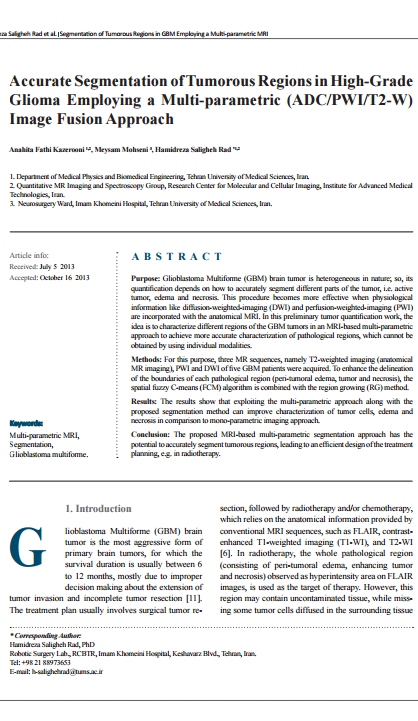Accurate Segmentation of Tumorous Regions in High-Grade Glioma Employing a Multi-parametric (ADC/PWI/T2-W) Image Fusion Approach
Abstract
Purpose:
Glioblastoma Multiforme (GBM) brain tumor is heterogeneous in nature; so, its quantification depends on how to accurately segment different parts of the tumor, i.e. active tumor, edema and necrosis. This procedure becomes more effective when physiological information like diffusion-weighted-imaging (DWI) and perfusion-weighted-imaging (PWI) are incorporated with the anatomical MRI. In this preliminary tumor quantification work, the idea is to characterize different regions of the GBM tumors in an MRI-based multi-parametric approach to achieve more accurate characterization of pathological regions, which cannot be obtained by using individual modalities.
Methods:
For this purpose, three MR sequences, namely T2-weighted imaging (anatomical MR imaging), PWI and DWI of five GBM patients were acquired. To enhance the delineation of the boundaries of each pathological region (peri-tumoral edema, tumor and necrosis), the spatial fuzzy C-means (FCM) algorithm is combined with the region growing (RG) method.
Results:
The results show that exploiting the multi-parametric approach along with the proposed segmentation method can improve characterization of tumor cells, edema and necrosis in comparison to mono-parametric imaging approach.
Conclusion:
The proposed MRI-based multi-parametric segmentation approach has the potential to accurately segment tumorous regions, leading to an efficient design of the treatment planning, e.g. in radiotherapy

